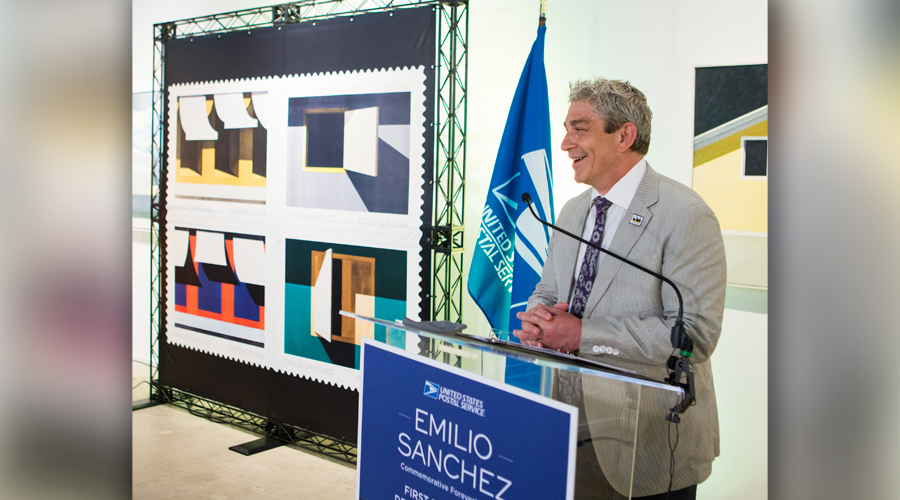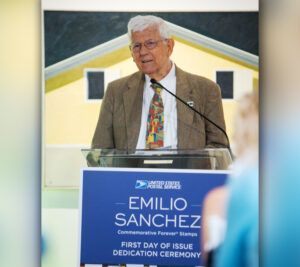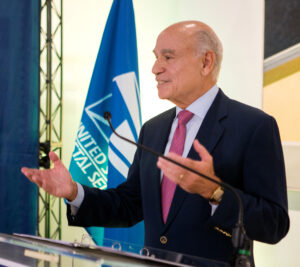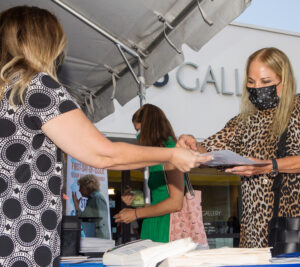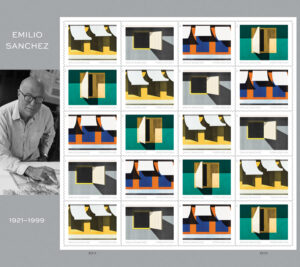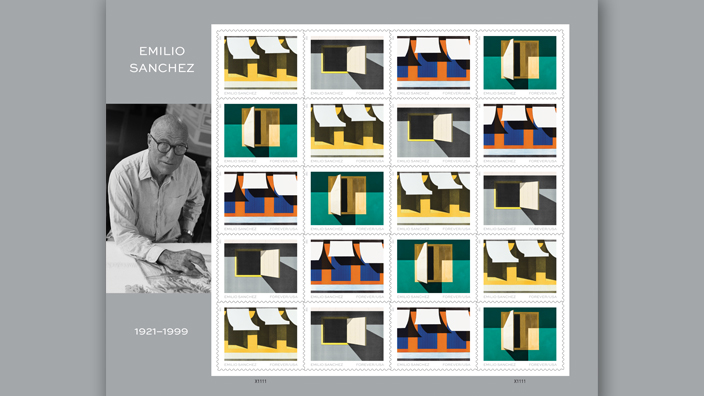The Postal Service celebrated the art of Emilio Sanchez last week by dedicating new stamps that showcase four of his colorful architectural lithographs and paintings.
The Miami ceremony was held on June 10 — the centennial of Sanchez’s birth, which Roman Martinez IV, vice chairman of the USPS Board of Governors, called “a perfect occasion to honor the man whose masterful works can be found in the permanent collections of museums and universities around the world.”
Sanchez (1921-1999), the first Cuban American artist to have his work honored on a U.S. postage stamp, explored the effects of light and shadow in his art to emphasize the abstract geometry of his subjects.
His artwork encompasses his Cuban heritage as well as his long life in New York City.
The pane of 20 Forever stamps, available at Post Offices and usps.com, feature “Los Toldos” (1973), “Ty’s Place” (1976), “En el Souk” (1972) and “Untitled (Ventanita entreabierta)” (1981).
Erik Stapper, a lawyer who represented Sanchez and who serves as a trustee of the Emilio Sanchez Foundation, recalled his client giving him a simple estate-planning instruction: “Make me famous.”
“Can there be a better birthday gift for our Cuban American immigrant friend than millions of new images by Emilio offered for sale at our local Post Offices?” Stapper said. “Each of those millions of images has a printed line that will serve as my words of welcome: Emilio Sanchez Forever USA.”
In addition to Martinez and Stapper, other speakers at the ceremony included author Elizabeth Goizueta; poet Richard Blanco; Jill Deupi, chief curator for the Lowe Art Museum at the University of Miami; and her husband, Victor, a senior lecturer at the university’s architecture school.
“This is a tremendous accomplishment, particularly given how long he had been largely overlooked by the art community,” said Victor, who is Cuban American. “It’s a wonderful honor on many fronts because it gives so many voices to people of different races and ethnic backgrounds.”
